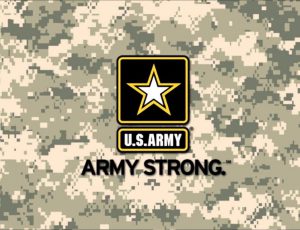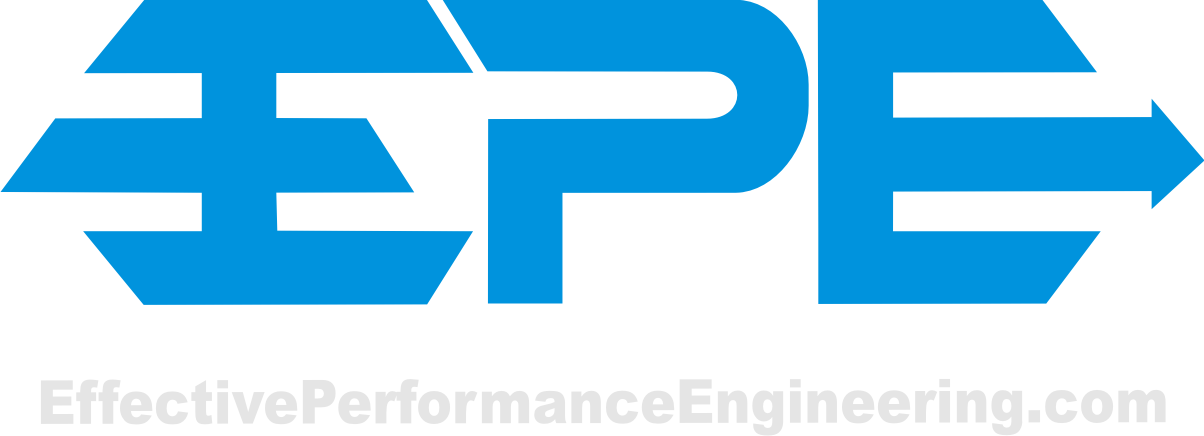My cousin 1st Lt. Aaron DeCapua is currently deployed with the US Army at Camp Buehring in Kuwait and the 40th Combat Aviation Brigadeâs Public Affairs Officer. He and I recently started a discussion over Facebook Messenger, which they became a very active chat about performance, then transitioned into a Facebook Call where we were able to speak and continue the dialog. If I were to summarize this discussion, I would say âUS Army with Performance Built-In.â

Introduction:
I really enjoyed this conversation and learned a lot about my cousins experience on his deployment. While we were speaking, he shared a few experiences and examples with me, which stuck with me and I thought to briefly share in this introduction. From this discussion, I was able to quickly and clearly see the need for Effective Performance Engineering in everything that is happening in theater and the connected nature of our battlefield today.
Here is Arnold Schwarzenegger with the troops. What a better way to represent performance with our US Army, as his Twitter profile says, âFormer Mr. Olympia, Conan, Terminator, and Governor of California. I killed the Predator. I told you I’d be back.â This unit is based out of California.

An office with a view. As a deployed US Army soldier you find your office where you stand. Of course, many of us as âroad warriorsâ can relate to this, rarely do we find ourselves sitting on the ramp of a CH-47 helicopter. While you are dangling a few hundred feet off the ground, communications and the performance of the networks these devices count on are critical, and your life depends on it.

Ask anyone on the wrong side of a drone and they will tell you the impact of the performance. As these devices are dependent on communications for all systems of navigation, systems and weapons (and more); enabling a lot of unique capabilities, the network and application performance is something that organizations are working to build in.

Interview:
Q1: How do you find the network connectivity while you are out in the field?
A1: Network connectivity is based primarily on the host nation infrastructure. Kuwait is more modern than the unstable countries in the region. At expeditionary bases like Camp Buehring, contracts with local vendors allow us to use Wi-Fi in our housing units. For cell phone communication, people either use a Wi-Fi to cellular device warmly referred to as a puck. American Cell phone companies for the most part allow service members to unlock their phones in situations where they will deploy. There are several Telecom companies in Kuwait that provide sims ranging $15-25, much of our personal communications are through these plans. Itâs as simple as pulling your American sim card out, and throwing in a Kuwaiti or Iraqi sim card. In remote locations in Iraq and Afghanistan you are at the mercy of the quality of the cell phone signal, which for the most part isnât bad in built-up areas.
Q2: What are some of your favorite apps you use, and a bit about their performance, being deployed in a desert?
A2: In reference to popular apps in theater, Iâm using a IPhone 4S, Apple has added a lot of new features to its OS, however, they have come at a price; the phone operates noticeably slower and lacks agility Well excluding the new Pokémon game that is all the rage. People play free games, everyone has a favorite, and mine is two dots.
Communications apps are always in high demand, people love to talk to friends and loved ones via text, voice, or video. Most people are using data plans to accomplish rather than cellular voice plans. It is very convenient. WhatsApp is popular due to its versatility and encryption, it works just like a phone. People who like abbreviated messages enjoy Voxer so they can have texting platform, but also have Walkie Talkie functionality. Facebook Messenger, Tango, KiK, Skype, are also used.
Bandwidth is at a premium though, you are charged per gigabyte so apps with compression are important. One kind of app thatâs important for many people here is encrypted VPN apps, people feel more secure about an encrypted connection and moving data around in the US, than over international hubs.
Then thereâs Netflix, service members love their Netflix, yeah it eats up data on a cell phone, however even over throttled Wi-Fi connection itâs great. Throttled connections are usually megabit per second pipes between 1.5Mbps to 6Mbps⦠but you never get it running that fast.
From a performance perspective, anything that kills my mobile devices battery, or apps with bloated code is unfavorable. If it takes too long to startup they usually are not useful in the field. Anything in the background running high clock cycles on my phoneâs processor is bad for me, and bad for business. You have your dichotomy of Apple and Android users, people like the simplicity of the IPhone, but not the baggage of ITunes, and EULAs. Android phones have more options on being different with freedom to move data around, something that Apple used to be. People use both, and most of the usual communication apps can be found in both the Apple, and Android fan clubs.
To get to the point, I donât like Skype, no one uses it, if they would spend as much time focusing on the tech instead of working on popup windows relating to âquality of call metricsâ, I think weâd have something good from Skype. Make it small, efficient, versatile, easy to use, and light on load.
Q3: If your technology worked better, what would it mean for you?
A3: Service members hate inefficiency. With all the military systems they encounter and with every system having a defense contract behind it along with high learning curves, training service members to be smarter about their off time. They long for efficiency, and ease of use, â3 clicks away from any solution.â It would mean I could be more connected with my family and friends, the people that mean most to me. Simplicity, and speed, at work and during my off time. There is no one program that can do everything, every application has their limitations, on duty and off. If technology was built on simplicity and speed it would make the most of my time at work, and with my family. This would mean I would be getting the most out of my technology, and life. Both are so intertwined now. Itâs good to see competition in the market place for better military systems, and our leadership seem to truly want the best tools at hand for their soldiers.
The below video shares ‘101 Information’ about the DCGS-A application, showing how this is used, and the connected intelligence which it is heavily dependent on networks and high performing integrated systems to function.
Service members are experts at avoiding bureaucracy. The social network in a unit is so close knit and their circle of friends often extends far beyond their unit, many find the most efficient applications very quickly and share information immediately with others! If you want product testers for communications apps use the military they will break it until the developers make it awesome.
At the end of the day many people have reusable energy solutions for charging their phones if they get in a place that is isolated without much power. You have backup batteries that can recharge your mobile devices up to 6+ times, to mobile solar panels you can put in your backpack that are pretty inexpensive, oh yeah I just remembered, the Amazon app is most definitely your friend out here, scratch that, best friend!
Q4: When you use mobile banking in the field, what is your experience like, and do you wished developers and business folk took real world conditions into consideration?
A4: Money is an international commodity, if we arenât looking at it from that point of view we are doing it wrong. If two banks are competing with apps, the app that can connect with a representative via cellular voice, Data Voice, or text, and have solid encryption are best, or have VPN built in. I have yet to see all those options in a banking app. USAA is the main military bank many service members use, they cater best to the needs of service members and USAA has been doing it for a long time that way. They have great car insurance for every place but California, âjabjabâ but their business model is perfectly aligned for Service memberâs needs. They have a great app, their fraud detection is amazingly accurate with â¦. well, Iâve never had to deal with false positives.
Q5: What would it mean for organizations if they built performance in?
A5: I think everyone needs to think globally to get investors involved, when one thinks only locally marketing is very difficult. From this discussion, you can see from the specific examples how some work well and some not, along with what service members are doing to get access to these products and services or simply not using them as a result of poor performance.
Conclusion:
Wow, what a great discussion we had.
1st Lt. Aaron DeCapua concluded the discussion with the below comments.
- Without communications we can’t survive… a lot of it is trial and error and people passing down solutions to the next holders of the torch in the region.
- Like you mentioned in your Effective Performance Engineering book, there are a lot of âTribeâ like behaviors with results of AAR’s and experiences being handed down within the Unit and soldier to soldier.
- We have these things in the Army called After Action Reviews, basically a post mortem. We are great at finding out why things were successful, and what didn’t quite go according to plan, and how it can be improved.
Here is an example of how things work with ‘high performance’ with the “40th CAB Sling Load” where a CH-47 carried a Blackhawk, and you can read about the details here.
In the work we do, I am glad to understand how technology keeps people safe and connected around the world, and hope more people can learn and share about the connected nature of everything…so we can make it better for all end users.
*For more on this story, see the Hewlett Packard Enterprise Blog, or what you can do now to build-in performance, this TechBeacon Article.
*Get your complimentary copy of the O’Reilly, “Effective Performance Engineering” book now.

Disclaimer: The views and personal opinions expressed in this article are those of the authors and do not necessarily reflect the official policy or position of any agency of the U.S. Government, Pentagon, or the U.S Army.

